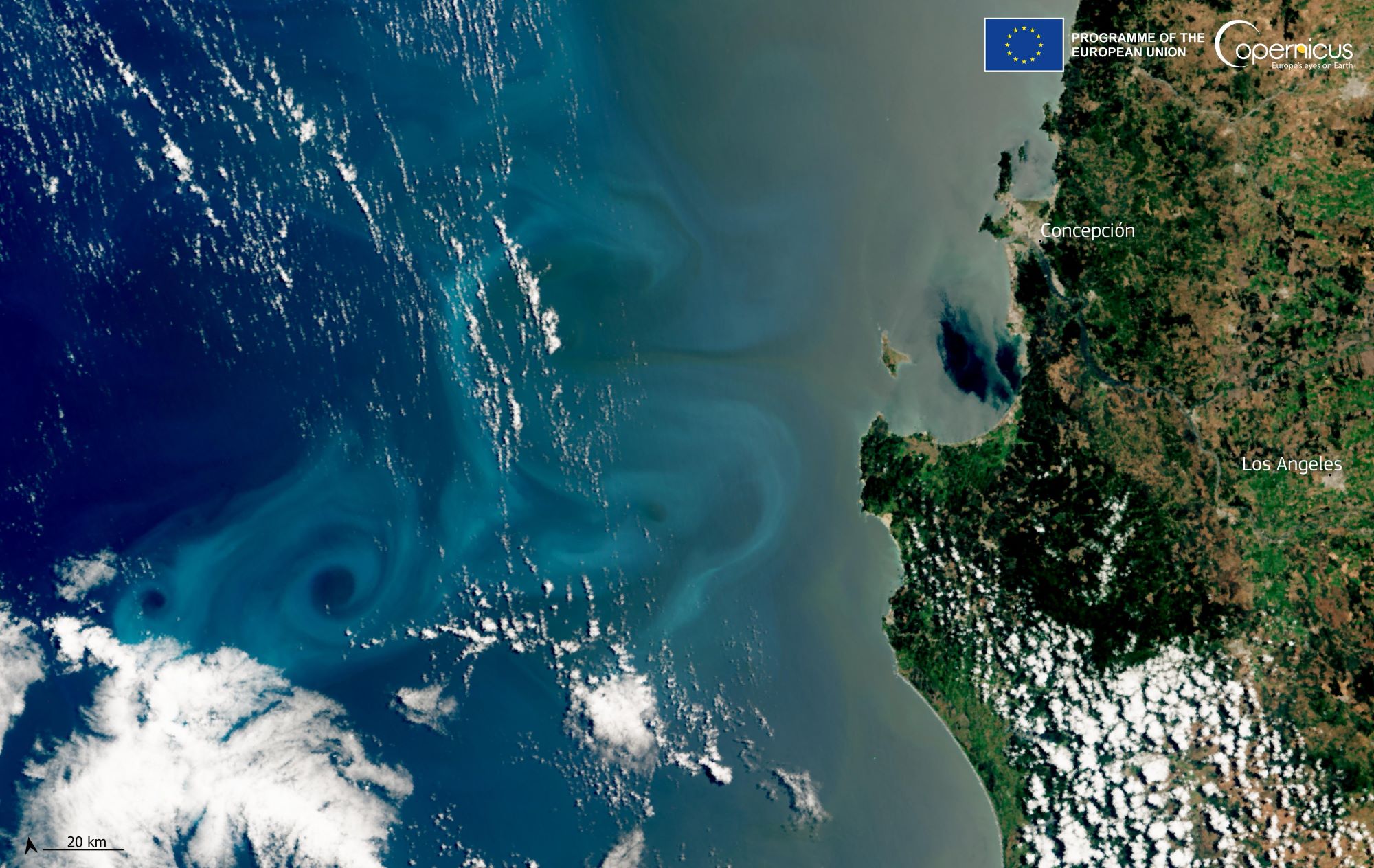ESA’s Copernicus Sentinel-3 captured phytoplankton bloom near Concepción, Chile.

Concepción is in south-central Chile, and is one of the three major conurbations in the country. It has a significant impact on domestic trade being part of the most heavily industrialized region in the country. The origin of Concepción dates back to 1550, when it was founded by Pedro de Valdivia as part of the Spanish Empire, under the name of Concepción de María Purísima del Nuevo Extremo, and was the capital of the Kingdom of Chile between 1565 and 1573, retaining the unofficial position of military capital[6] for the rest of the colonial period. The city was an important site in the struggle for Chile’s independence, with the Chilean declaration of Independence being held at Concepción’s Plaza de la Independencia.
Also, phytoplankton have two significant roles, the producer of the food chain, and the CO2 adjuster. Phytoplankton produces oxygen and organic material from solar light and water, grows and then feeds zooplankton in the prey-predator system. Phytoplankton also contributes largely to the Earth on a planetary scale by absorbing CO2 and producing oxygen.
The local scenery on the ground is as follows.

Reference: Copernicus EU’s Tweet
See earthview photo gallery: LiVEARTH